The origin of the star
DMG now had a successful brand name, but still lacked a characteristic trademark. Then Paul and Adolf Daimler – the company founder’s two sons, and now senior executives at DMG – remembered that their father, who had died in March 1900 shortly before his 66th birthday, had once used a star as a symbol.
Gottlieb Daimler had been technical director of the Deutz gas engine factory from 1872 until 1881. At the beginning of his employment there, he had marked a star above his own house on a picture postcard of Cologne and Deutz, and had written to his wife that this star would one day shine over his own factory to symbolize prosperity.
The DMG board immediately accepted the proposal and in June 1909, both a three-pointed and a four-pointed star were registered as trademarks. Although both designs were legally protected, only the three-pointed star was used. From 1910 onward, a three-dimensional star adorned the radiator at the front of the car.
The three-pointed star was supposed to symbolize Daimler’s ambition of universal motorization – “on land, on water and in the air”. Over the years, various small additions were made. In 1916, the tips were surrounded by a circle, in which four small stars and the word Mercedes were integrated, or alternatively the names of the DMG plants at Untertürkheim or Berlin-Marienfelde.
In November 1921, DMG applied for legal protection of utility patents for new variations on their trademark and lodged with the patent office a three-dimensional three-pointed star enclosed in a circle – which included the design intended for use on the radiator grille. It became a registered trademark in August 1923.
A star guiding motorists everywhere
The period of inflation after the First World War meant a difficult time for sales – especially of luxury goods such as passenger cars – and had serious repercussions on the automotive industry. Only financially strong companies with well-established brands were able to survive – although even these were frequently forced into mergers and cooperative ventures. It was in this way that the former rivals, DMG and Benz & Cie., formed a syndicate in 1924 in order to standardize design and production, as well as purchasing, sales and advertising, and thereby remain competitive.
During this period, the two companies generally marketed their products jointly, although still under separate trademarks. Two years later, in June 1926, the two oldest motor manufacturers merged to form Daimler-Benz AG.
At this point a new trademark was designed, which brought together the main characteristics of both the existing emblems – the world-renowned three-pointed star belonging to Daimler-Motoren-Gesellschaft was surrounded with its trade name ‘Mercedes’ as well as that of the equally famous name ‘Benz’, whose laurel wreath entwined the two names together.
Trademark
This trademark, which has changed little over the decades, still adorns Mercedes-Benz vehicles and has come to represent quality and safety on roads everywhere. And throughout the world the name ‘Mercedes-Benz’ is synonymous with tradition, innovation and the future of the automobile.
Trademark: Three-pointed star of 1909. Trademark of Benz & Cie. of 1909. Three-pointed star in the circle of 1916. The new trademark of the merger of DMG and Benz Cie. in 1926. The actual three-pointed star.
From gold to silver: the registered trademarks of Daimler-Motoren-Gesellschaft and Benz & Cie. from 1909, the changed Mercedes star of 1916 and the new Mercedes-Benz emblem from 1926. The version of the star in the circle registered in 1921 reflects the later form of the stylised Mercedes-Benz trademark.

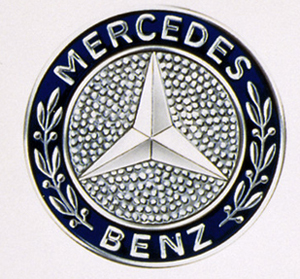
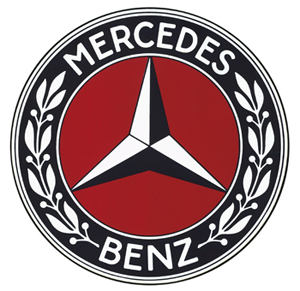

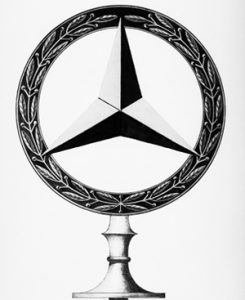
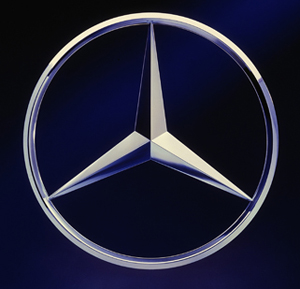
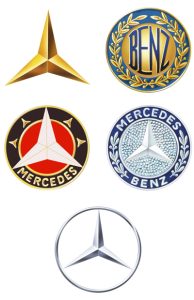
You must be logged in to post a comment.